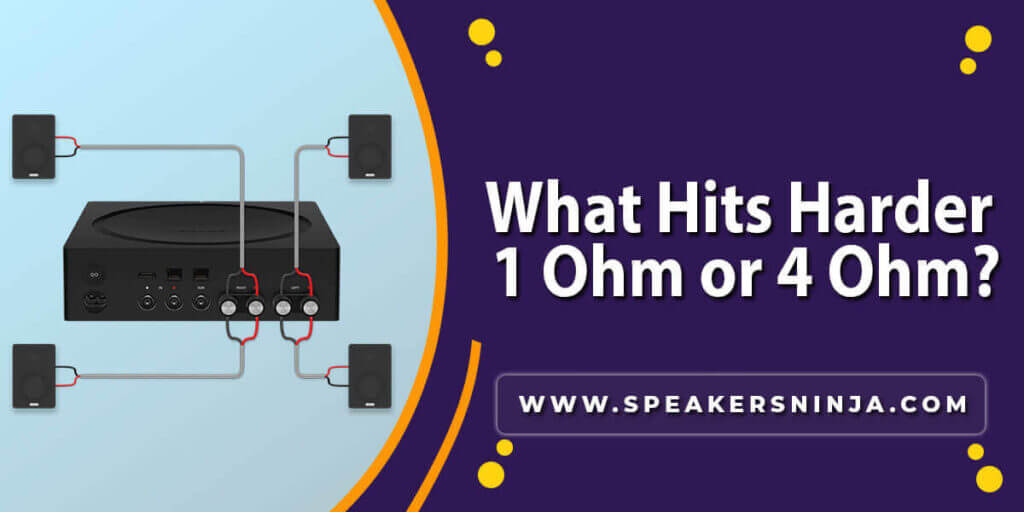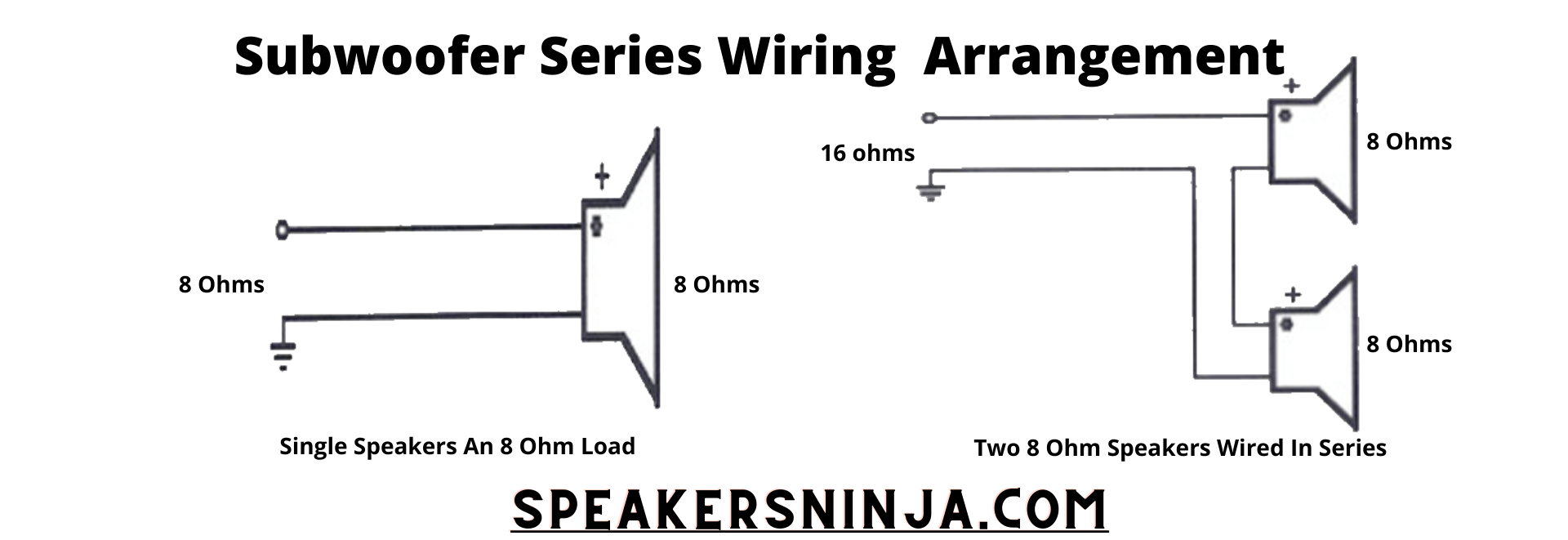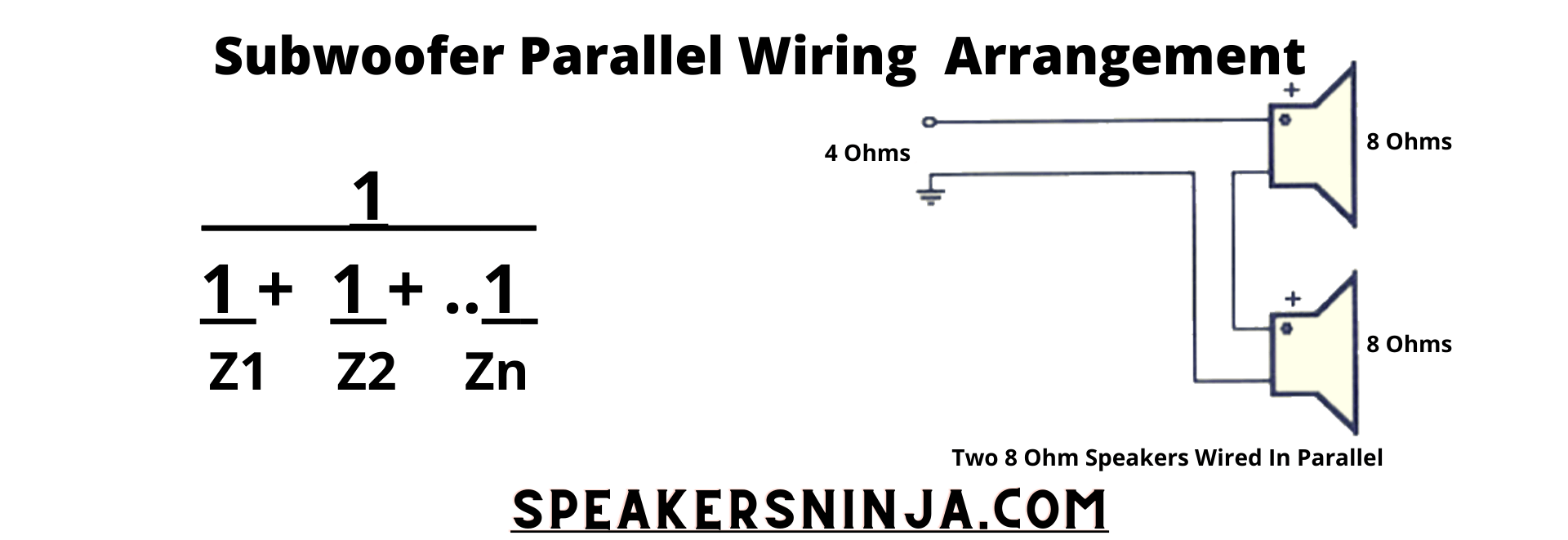People who are crazy about their car maintenance do not compromise on amplifiers and subwoofer specs. It is a puzzle for some people to understand the basic terminologies about the speaker, like what is meant by impedance. Why is it so important? And the most important one, What hits harder 1 ohm or 4 ohms?

Let’s make clear all these blurred concepts in the world of impedance. Starting with the basic and key questions:
What is meant by the speaker’s impedance?
Impedance is a resistance offered to the flow of alternating current by the electrical circuit. So, the impedance of the subwoofer coil is the resistance accounts for the electrical resistance that a subwoofer coil places in the path of amplifier output. The unit for measuring impedance is the same as resistance which is “ohm”, it is symbolized with the Greek alphabet omega Ω.
Subwoofers come in standard impedance of 2 ohms, 4 ohms, and 8 ohms. To know what you are having right now, you can check it on the magnet where it is printed.
The overall impedance of the subwoofers wired together must be very low, so the amplifier does not get overheated.
Further clearing the misunderstandings about the impedance of amplifiers and subwoofers, the main question that arises is What hits harder than 1 ohm or 4 ohms?
Read also : 1 Ohm Vs 2 Ohm Vs 4 Ohm
Importance of Speakers’ Impedance
The most important thing to make clear is impedance changes with the frequency, for example, if a car audio manufacturer says the impedance of the speaker to be 8 ohms at 45 hertz of frequency, it will fluctuate with the change in frequency like at 2,000 hertz might be 3 ohms.
The overall impedance of a speaker is a dynamic profile that varies with frequency. So, when we see the manufacturer’s label on a speaker, we should have an idea it is a nominal impedance a rough average estimate of speakers and amplifiers when it is driven within that designed part of the audio spectrum.
Impedance changes because of the following:
- Resonance frequency
- Coil inductance
Resonance frequency: It refers to the frequency below which loudspeakers cannot create sound output for a given input signal.
Voice coil inductance: Another reason for fluctuation in impedance is voice coil inductance which causes impedance to increase at higher frequencies. The impedance of the speaker determines the amount of wattage it fed on the amplifier. Hence, current flow increases with the decrease in impedance (resistance). Higher current requires the amplifier to amplify the power output, so with the decrease in impedance, more current will flow through a circuit which in turn exerts more workload on the speaker.
For instance: 4-ohm speakers offer double resistance as a 2-ohm speaker, which results in half of the energy flow through the speaker. As a result, an amplifier of ohms with power delivered is 100 watts can deliver 200 watts at 4 ohms of resistance.
Around all amplifiers works well at 4 ohms of load and very few amplifiers are stable at 1-ohm load.
We can categories the above things as:
- With low impedance, more current will flow exerting greater load with increased power.
- High impedance will reduce the current flow, a smaller load exerted on the speaker will decrease the power.
Need to Know About Speaker’s Impedance
It is important for you to know about the speaker’s impedance for a reason to make sure that the speaker’s impedance lies within the range that the amplifier is designed for. Amplifier capability must be taken into account before applying a load.
One will like the subwoofers and speaker to be very low, so the amplifier can be run without overheating.
Wiring options cause the impedance of the subwoofer to change.
The point is worth noting that impedance changes with frequency but also with how the subwoofers and voice coils are grouped together: either with parallel or series arrangement.
Subwoofer Series Wiring Arrangement
The series arrangement means subwoofers are connected end to end with each other, which is the positive terminal of one connected with the negative of others and so on. Overall impedance increases in series arrangement with the addition of individual impedance. As if two subwoofers of 2 ohms connected in a series wiring, the resultant impedance will be 4 ohms

Subwoofer Parallel Wiring Arrangement
In parallel wiring, all the terminals of subwoofers find a common attachment. Like all positive ends are connected together and all negative ones are attached together. The resultant impedance of subwoofers is equal to individual impedance infraction. As an example, we can conclude 4 ohms speakers arranged parallel to each other will have an overall impedance of 1 ohm.

Difference Between 1 Ohm Or 4 Ohms
A voice coil is present in every speaker and subwoofer, this device basically offers electrical resistance which resisting property we call is impedance. As the speaker’s impedance declines, it becomes very easy for the amplifier to deliver power to it.
So, technically considering the difference lies between 1 ohm and 4 ohms is only about the resistance of a speaker’s voice coil offers to the audio current provided by the amplifier. The main reason for overheating the amplifier is when resistance is too low the power supply increases greatly than its capability to manage.
Make clear in your mind, if you are thinking of connecting a 4-ohm speaker with a 4-ohm amplifier you are totally wrong. Finding a perfect matching is highly recommended to meet your desired requirements like a 4-ohm speaker can be connected to a 1-ohm amplifier. It is the only way your loudspeaker will not handle the amplifier’s full power output.
Another aspect to be very clear, one should be very careful and connecting while connecting the 1-ohm speaker with a 4-ohm amplifier, the amplifier will be overloaded to be even over burned.
Summing up the discussion
Q. What Hits Harder 1-Ohm Or 4-Ohm?
If we talk in technical terms, a 1-ohm impedance will hit harder than 4-ohm subwoofer to create more output when given with similar wattage, just because of the low impedance.
1-Ohm
- This makes a louder sound.
- Costly.
- Puts load on the amplifier.
4-Ohm
- This produces a sound of better quality.
- Cheap.
- Good amplifier efficiency.


Jason oliveira says
2 dual 4ohm speakers. 1ohm final or 4 ohm final. Wouldn’t I benefit from running a 4ohm load vs 1ohm with load, if I have enough power at a 4ohm load Wouldn’t it make more sense not only in terms of efficiency and sq but control over my subwoofer???
Andrew says
Box rise (impedance rise) will be more pronounced in the 4ohm resulting in greater losses of power.